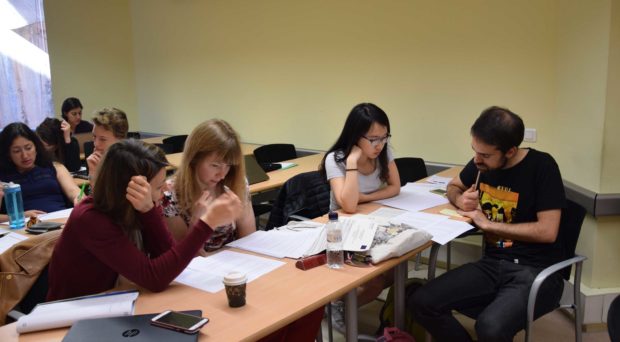
During the last week of March, I was invited to present a short talk to a number of PhD students in Barcelona, as part of our ongoing cooperation with the MiRoR consortium. This project is an innovative and ambitious joint doctoral training program funded by Marie Skłodowska-Curie Actions, dedicated to Methods in Research on Research (MIROR) in the field of clinical research.
The aim of my presentation was to provide the students with an editorial view on how to prepare and recognize a suitable reviewer report, and how, as an author, to formulate a response to the referees.
Both in the course of my talk and afterwards, I received numerous interesting questions from the students, who very thoroughly analyzed the reports during the first hour.
In the first part of our session, the students were divided into small groups, and were asked to assess examples of authors’ responses and reviewers’ reports, available from the BMC Medicine’s website. They would then note down what features they perceived were part of a high quality report, or which ones indicated a more superficial review. The notes were discussed later during the meeting.
For the second half of the session, we started off with my presentation regarding peer-review reports and authors’ responses, and then allowed time at the end for questions and open discussion.
Both in the course of my talk and afterwards, I received numerous pertinent questions from the students, who very thoroughly analyzed the reports during the first hour. We covered a broad range of aspects regarding the whole peer-review process, where many queries or comments were about how to formulate or respond to requests, and regarding the editorial decision-making process.
One aspect that everyone agreed on was that responses, no matter who writes them, need to be clear and explain why a change is made, requested, or declined. As the peer-review process aims to help the authors improve their manuscript, it would be a missed opportunity not to make the most of the reviewers’ comments, or not acknowledging the efforts made by the authors.
Among other topics of discussion, I felt the students appreciated receiving guidance on how to contact editors, who are there to keep the review process fair and impartial. The main message was that authors, and reviewers alike, should feel free to contact the handling editor of their manuscript, to ask for clarifications or express concerns. The intention of my presentation was to provide guidance that would be applicable elsewhere, irrespective of the journal’s editorial policies or scope.
I personally really enjoyed spending time with both the students and organizers of this project, and I hope my presentation gave them additional useful tools to help manage review requests and submitted manuscripts. I certainly look forward to future meetings like this one, and would like to thank the organizers for inviting me to this very productive session.
Comments